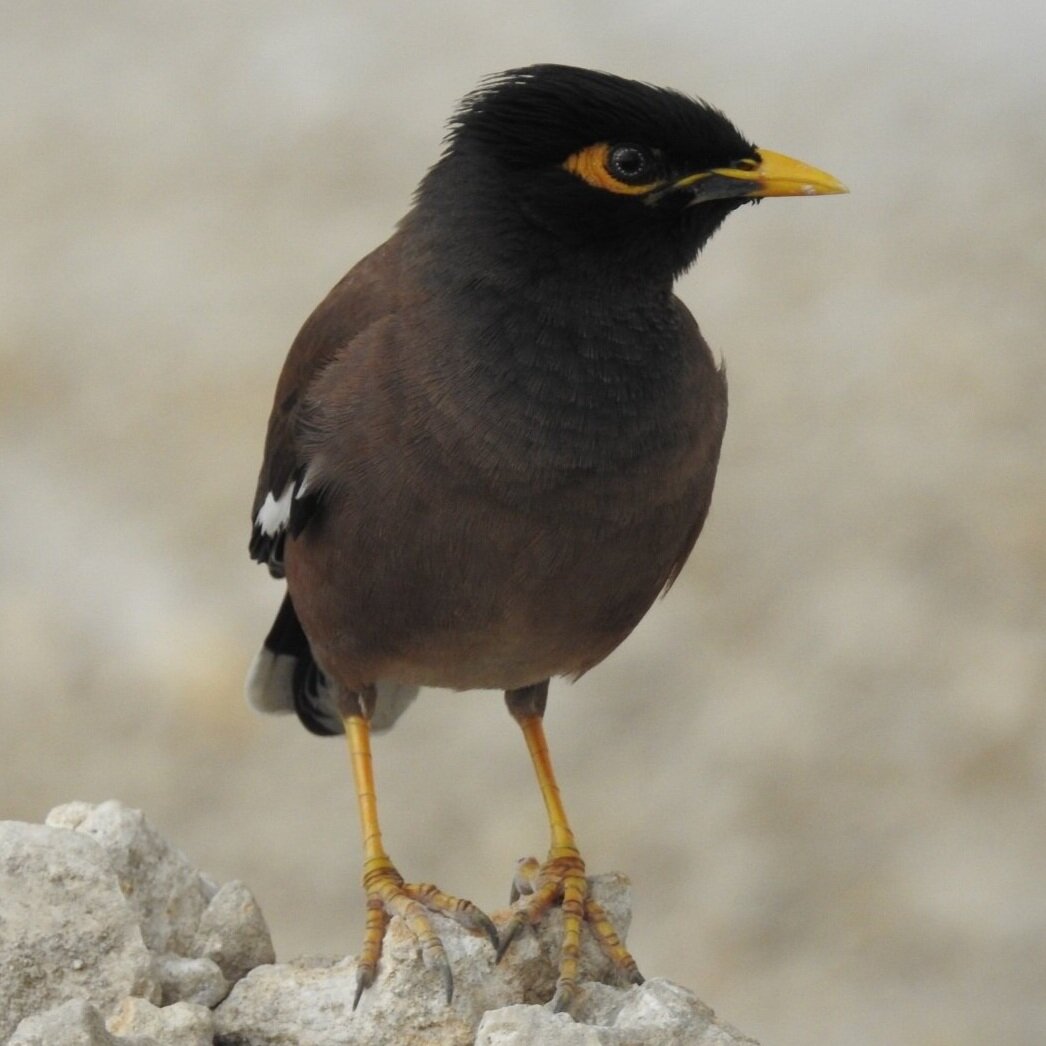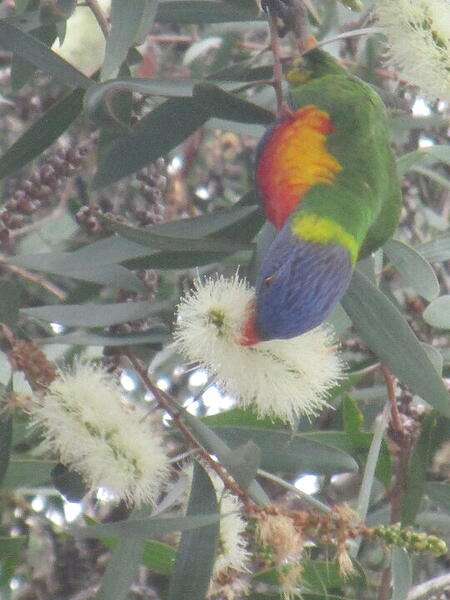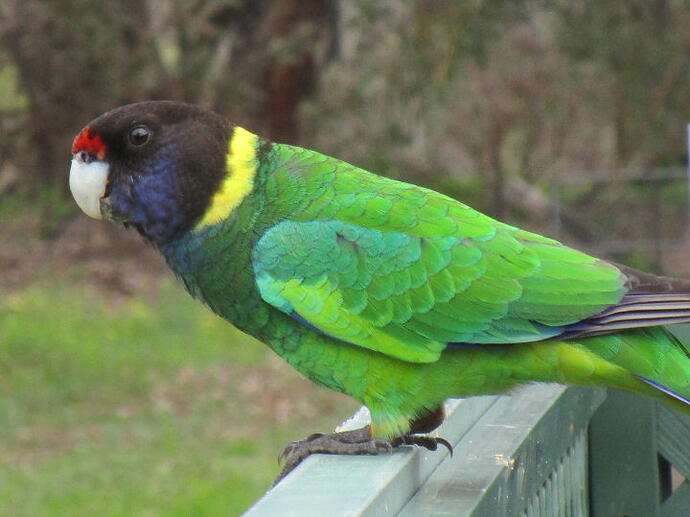They are not native to Western Australia and are considered a pest.
They’re a damn pest here too, aggressive little buggers.
Not here.We hang apples out for them. ![]()
They go for about a thousand dollars here
I assume there are breeders there.
If so, then such a high price cannot really be justified.
The price ranges from US$400 to US$2000
There are a couple of bird aviary places which breed parrots in a place called homestead which is like farms and agriculture here in South Florida but cheapest I have ever seen lorikeets is a thousand .
There are wild parakeets , Quakers , love birds and few other parrots established here but not lorikeets .
The established birds have all by now gone back to the wild colors in other words parakeets , love birds , etc nothing colorful at all just a dull green .
We had but no longer a breeding pair of Macaws in my community on a high palm tree with a hole and they certainly were colorful but sadly they took off last year .
Though this contradicts my post , most wild parrots are in South Florida and speaking to countless back yard bird breeders no one has ever mentioned lorikeets .
" Florida boasts 17 species of Psittaciformes (the phylogenetic order which includes parrots, parakeets, macaws, cockatoos, lovebirds, lorikeets, budgerigars, and other relatives). This is an astonishing number, considering there are 21 species of feral parrots in the North American continent, meaning you can find 81% of all wild parrots in Florida!‘’
Here in London, falcons were brought in to keep the pigeon population down, but they went for the Parakeets instead. They are darlings.
I would have never thought parakeets in London as they do not take well to cold , are these Quaker " parakeets " ?
As think those also called parakeets ?
I used to see Eagles , Hawks and Owls which loved when lived in Albany even saw an Eagle grab a cat in my in my youth from a baseball field .
Edit , Just read ring-necked parakeets which I certainly did not think could handle cold go figure , they are lovely birds and have seen even yellow ones around but dominant bird is the Quaker .
Yes, there are various stories going round:
The well to do brought them back from their travels to India, got bored with them caged so released them.
The BBC and other W. London filmmakers imported them, then released them when no longer required.
I don’t know about the dead parrot sketch, he could have been just resting.
No they are Indian Ringnecks & it is not just within London that they are thriving either.
Ringnecks are beautiful but unlike Quakers could never think they could handle cold , prolonged Winters .
I found the following.
A number of urban myths have circulated for some years concerning the arrival of ring-necks in London, each one told many times over, and like the parakeets, where they originated no one knows. In 1968, songs with wonderfully crafted guitar solos were not the only thing that Jimi Hendrix was releasing. The story has it that during a drug fuelled weekend, and in a symbolic gesture of freedom perhaps, he decided to release his pair of ring-necked parakeets, ironically named Adam and Eve. Was it this breeding pair that led to the tens of thousands of parakeets now living in South-East England? The other popular fable is that they were either released or escaped from Shepperton Studios during the filming of The African Queen. Shot in 1951, and starring Humphrey Bogart and Kathrine Hepburn, it of course required exotic animals to play along-side them as extras. If this is the origin of our current resident parakeets, then they never actually appeared in the film (I’m reliably informed), although absence of evidence isn’t evidence of absence, they may of escaped before filming started. Some have noted that they couldn’t have survived the long, penetratingly cold, winter of 1962/3, but they survive in the foothills of the Himalayas, so who knows?
I would think considering India was a British colony , they were imported as pets and over time released by those who lost interest , perhaps escaped here and there .
Since you know animals you know the Mynah birds which are incredible at mimicking other animals .
I see them now and then by beach of all places and some mimic dogs .
Common Hill Myna

This arboreal myna, which prefers tropical hardwood hammocks but could also be found in suburban neighborhoods, was last reported in southern Miami-Dade County in 2022 and may have become exterpated from our area. Locations where they were previosly seen include Matheson Hammock Park and adjacent Fairchild Tropical Botanic Garden, around Baptist Hospital on North Kendall Drive, and in the Falls and Zoo Miami areas. Photo: Luis Gonzalez/Tropical Audubon Society.
Common Myna

This ground-feeding myna can be found around shopping centers and fast-food restaurants throughout Miami and the Keys. Photo: Luis Gonzalez/Tropical Audubon Society.
It’s so sad we no longer see them.
I personally love the non native animals as feel they add a lot to this place granted the only one’s which I do think take a toll are pythons but as far as the rest go unless they are driving bulldozers and cement mixers they are harmless .
Plenty like to say they displace natives but I disagree because it is cement which is displacing the natives and non natives have found a niche .
You go to any parking lot here and you will see Curly Q lizards and there aren’t any native lizards that can live , thrive in scorching parking lots .
In Australia Indian Mynahs are considered a pest and are routinely culled. I used to trap and kill them when my garden had an invasion of them. I must have killed many dozens in the time I had a trap.
The trap was a simple design I made out of wire mesh (copied a men’s shed design) and worked particularly well, sometimes would catch 3 or 4 at a time. I think it only caught one native bird which I released of course. Dry dog food was a good bait.
Not to be confused with the native Noisy Miner
After trapping them for a couple of years they basically disappeared from my garden though I notice a few have returned.
All birds are welcome in our garden.





